25 Volcanic Wonders Around The World You Never Knew Existed
Volcanoes are among the most dramatic and awe-inspiring forces of nature—raw, unpredictable, and utterly mesmerizing. These aren’t just geological features; they are Earth’s way of revealing its fiery heart, shaping continents, forging islands, and sculpting landscapes that seem to belong to another world. From smoldering craters and lava lakes to ice-covered calderas and technicolor slopes, volcanoes ignite our imagination like few other natural wonders. In this newly expanded guide, we explore 25 surreal volcanic wonders that challenge everything you thought you knew about volcanoes. Spanning from the frozen highlands of Iceland to the sun-soaked archipelagos of the Pacific, these volcanic sites are as varied as they are extraordinary. Some glow with otherworldly colors, others bubble with life deep beneath the surface—and all of them are stunning reminders of our planet’s raw creative power. Whether you're an adventure seeker, a nature lover, or simply curious, these volcanic marvels promise to leave you inspired, awestruck, and ready to explore Earth’s most powerful landscapes.
1. The Mystique of Mount Erebus: Antarctica's Fiery Giant
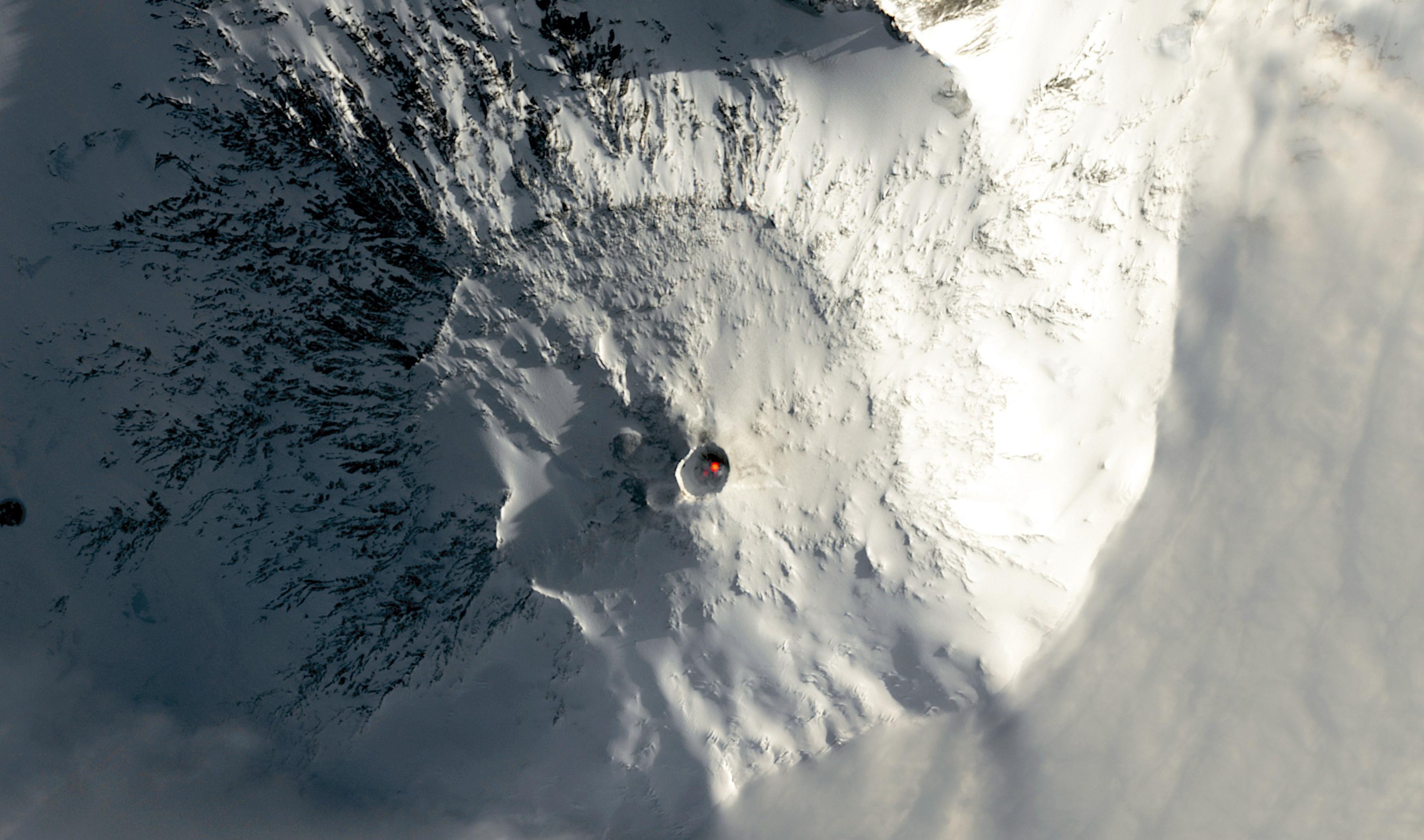
Mount Erebus, located on Ross Island in Antarctica, is one of the most remote and least accessible volcanoes on Earth. Despite its icy surroundings, Erebus is an active volcano, boasting a persistent lava lake that offers a stark contrast to the frozen landscape. The mystique of Erebus lies in its duality—an icy exterior masking a fiery heart. Scientists are drawn to Erebus for its unique geological features, including its rare phonolite lava and the presence of ice fumaroles. The volcano's remote location and harsh climate make it a challenging destination, yet its allure is undeniable. Erebus serves as a reminder of the Earth's dynamic nature, where fire and ice coexist in a delicate balance, challenging our understanding of volcanic activity in extreme environments.
2. The Enigma of Ol Doinyo Lengai: Tanzania's Sacred Volcano
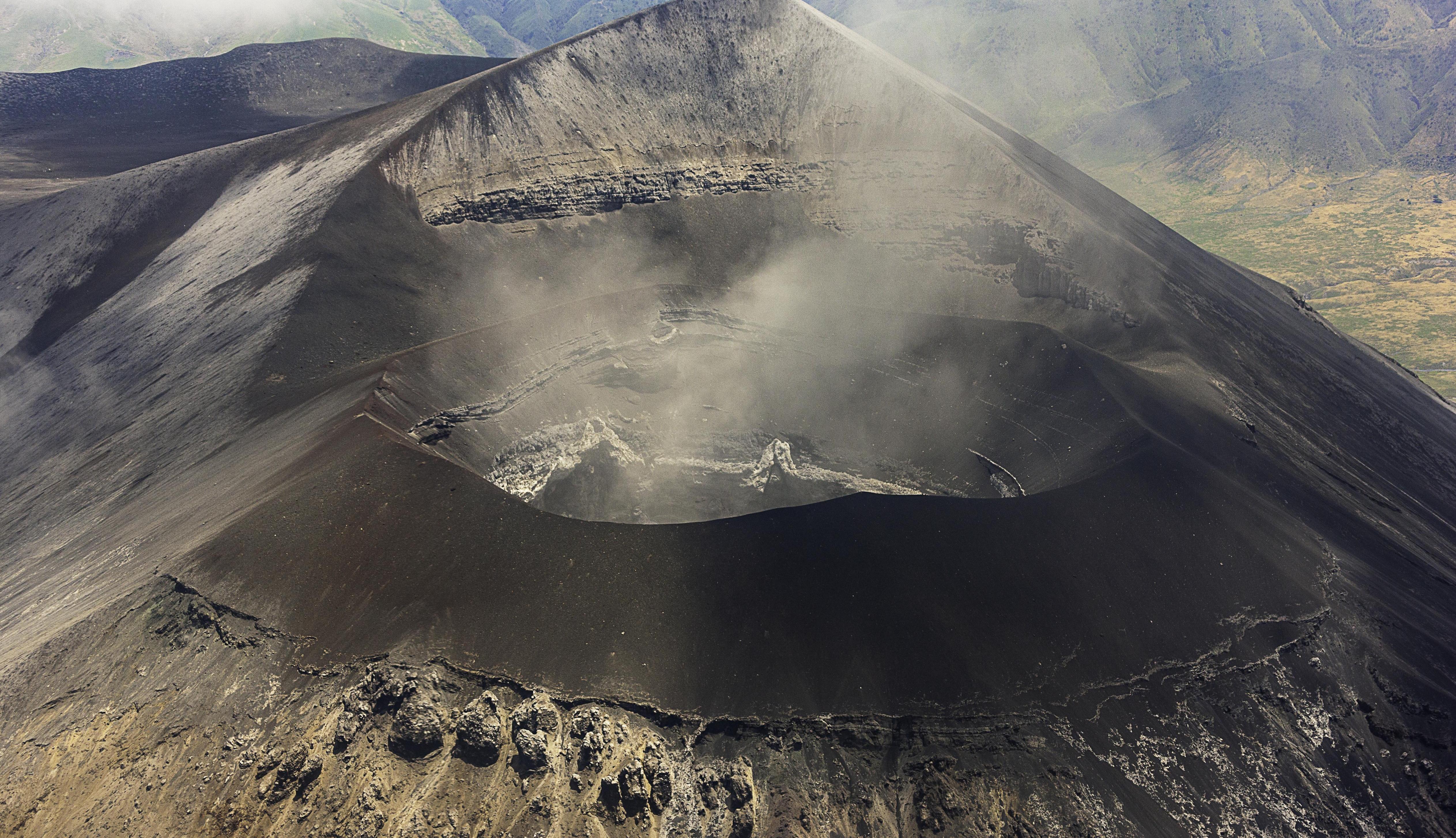
Ol Doinyo Lengai, known as the "Mountain of God" in the Maasai language, is a unique volcano located in Tanzania. It is the only active volcano that erupts natrocarbonatite lava, a rare type of lava that is rich in sodium and potassium carbonates. This unusual composition gives the lava a distinctive black color when it erupts, which then turns white as it cools and reacts with the atmosphere. The enigma of Ol Doinyo Lengai lies in its spiritual significance to the Maasai people, who view it as a sacred site. The volcano's eruptions are considered a divine manifestation, and its presence is deeply woven into the cultural fabric of the region. Visitors to Ol Doinyo Lengai are not only captivated by its geological uniqueness but also by the profound spiritual connection it holds for the local communities.
3. The Splendor of Mount Fuji: Japan's Iconic Peak
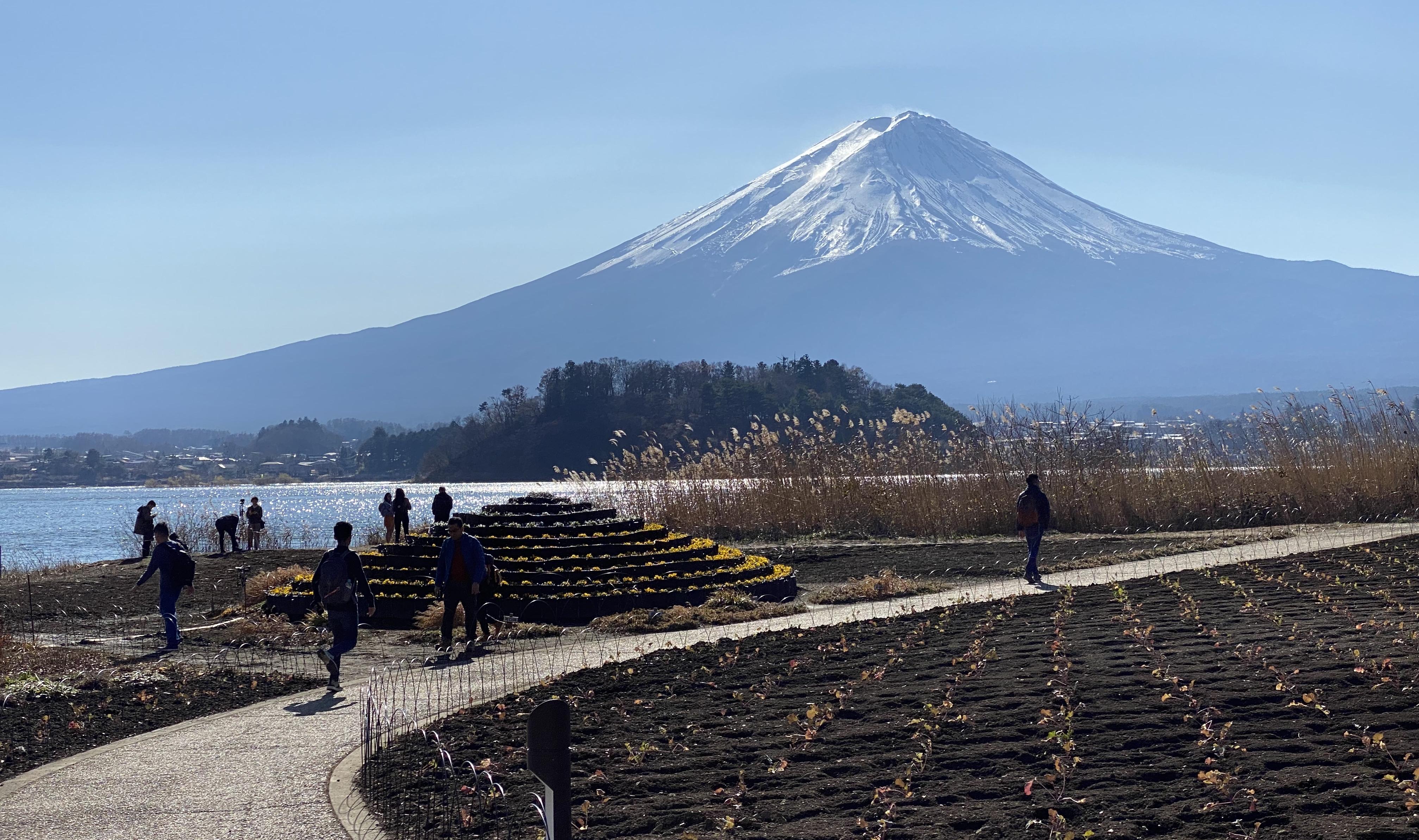
Mount Fuji, Japan's tallest and most iconic peak, is a symbol of national pride and a source of artistic inspiration. Its near-perfect conical shape and snow-capped summit have made it a subject of admiration for centuries. Mount Fuji's splendor extends beyond its physical beauty; it is deeply ingrained in Japanese culture and spirituality. The mountain is considered sacred, with Shinto shrines dotting its slopes and pilgrims undertaking arduous journeys to reach its summit. Fuji's volcanic history is equally fascinating, with its last eruption in 1707 leaving a lasting impact on the surrounding regions. The mountain's geological and cultural significance make it a must-visit destination for those seeking to experience the harmonious blend of nature and tradition. Mount Fuji stands as a testament to the enduring allure of volcanoes, captivating the imagination of all who behold it.
4. The Majesty of Mauna Loa: Hawaii's Volcanic Titan
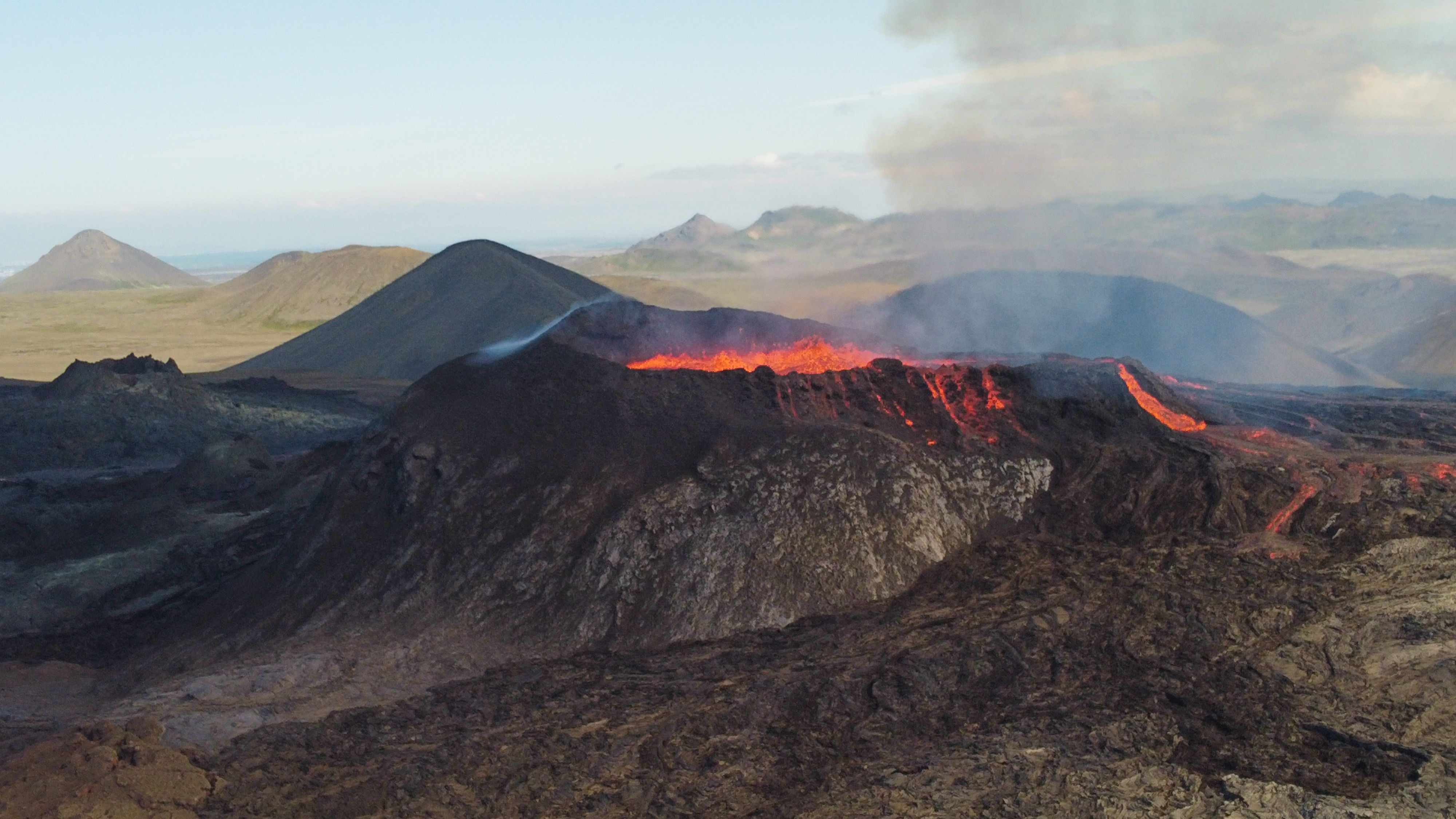
Mauna Loa, located on the Big Island of Hawaii, is the largest volcano on Earth in terms of volume and area covered. Its massive size and frequent eruptions have shaped the island's landscape over millennia. The majesty of Mauna Loa lies in its sheer scale and the dynamic processes that occur within its caldera. The volcano's eruptions are characterized by fast-flowing lava that can travel great distances, posing a significant threat to nearby communities. Despite these risks, Mauna Loa's beauty and geological significance draw scientists and tourists alike. The volcano is part of Hawaii Volcanoes National Park, a UNESCO World Heritage Site that offers visitors a chance to witness the raw power of volcanic activity. Mauna Loa serves as a reminder of the Earth's ever-changing nature, where creation and destruction are intricately linked in a continuous cycle.
5. The Mystery of Mount Nyiragongo: Africa's Lava Lake
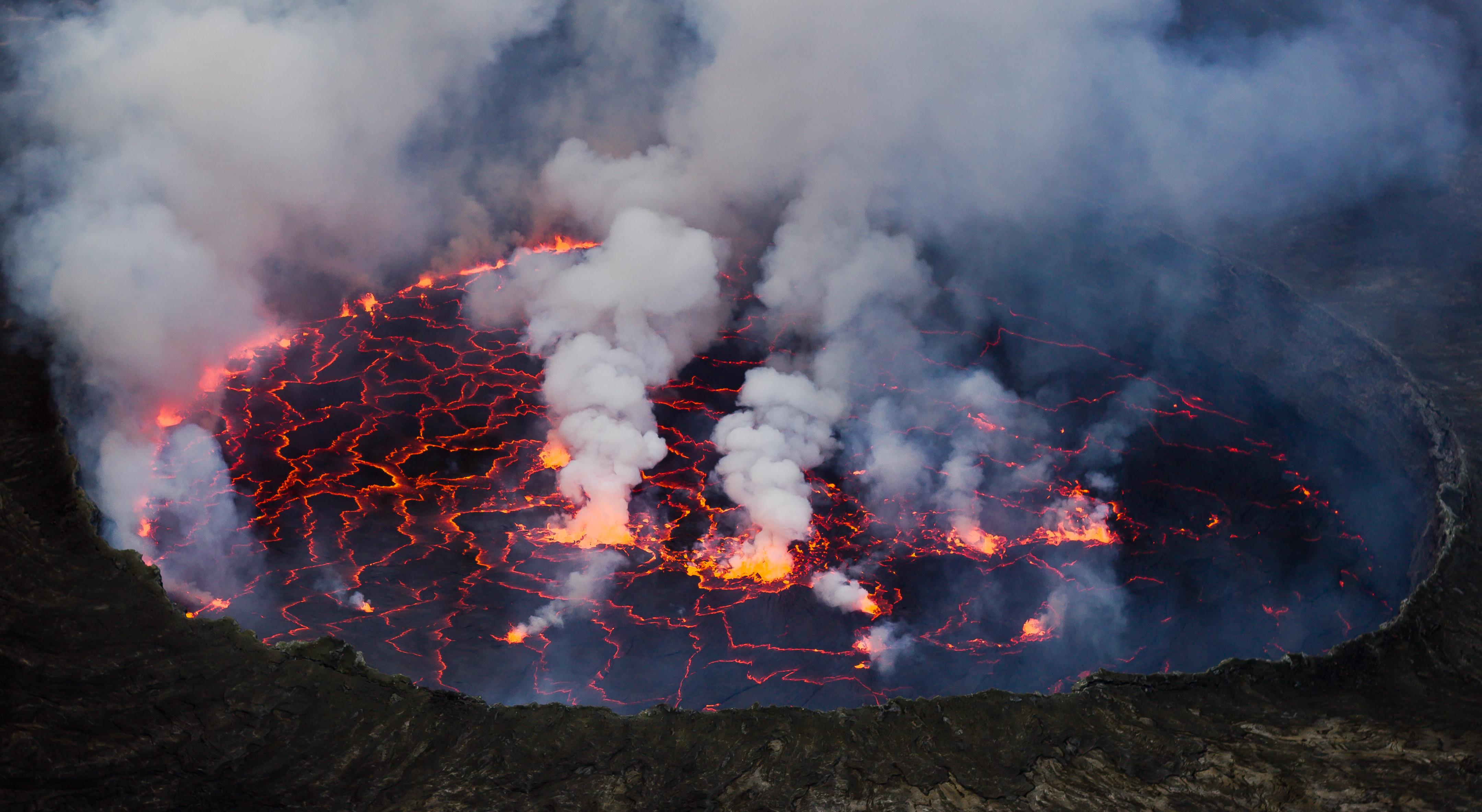
Mount Nyiragongo, located in the Democratic Republic of the Congo, is home to one of the world's most active and largest lava lakes. The mystery of Nyiragongo lies in its volatile nature and the unique composition of its lava, which is unusually fluid due to its low silica content. This fluidity allows the lava to flow at remarkable speeds, posing a significant hazard to the surrounding areas. The volcano's frequent eruptions and the presence of the lava lake make it a focal point for scientific research and adventure tourism. Despite the inherent dangers, visitors are drawn to Nyiragongo to witness the mesmerizing glow of the lava lake, a sight that is both awe-inspiring and humbling. The volcano's unpredictable nature serves as a reminder of the delicate balance between human habitation and the forces of nature.
6. The Wonders of Yellowstone: A Supervolcano's Hidden Power

Yellowstone National Park, spanning parts of Wyoming, Montana, and Idaho, is home to one of the world's largest active supervolcanoes. The wonders of Yellowstone lie not only in its stunning geothermal features but also in the immense power hidden beneath its surface. The park's geysers, hot springs, and fumaroles are surface expressions of the volcanic activity simmering below. Scientists closely monitor Yellowstone for signs of potential eruptions, which could have global consequences. Despite these risks, Yellowstone's beauty and biodiversity attract millions of visitors each year. The park serves as a testament to the Earth's dynamic processes, where life thrives amidst geothermal activity. Yellowstone's supervolcano is a reminder of the Earth's capacity for both creation and destruction, challenging our understanding of the natural world and our place within it.
7. The Intrigue of Mount Etna: Europe's Most Active Volcano
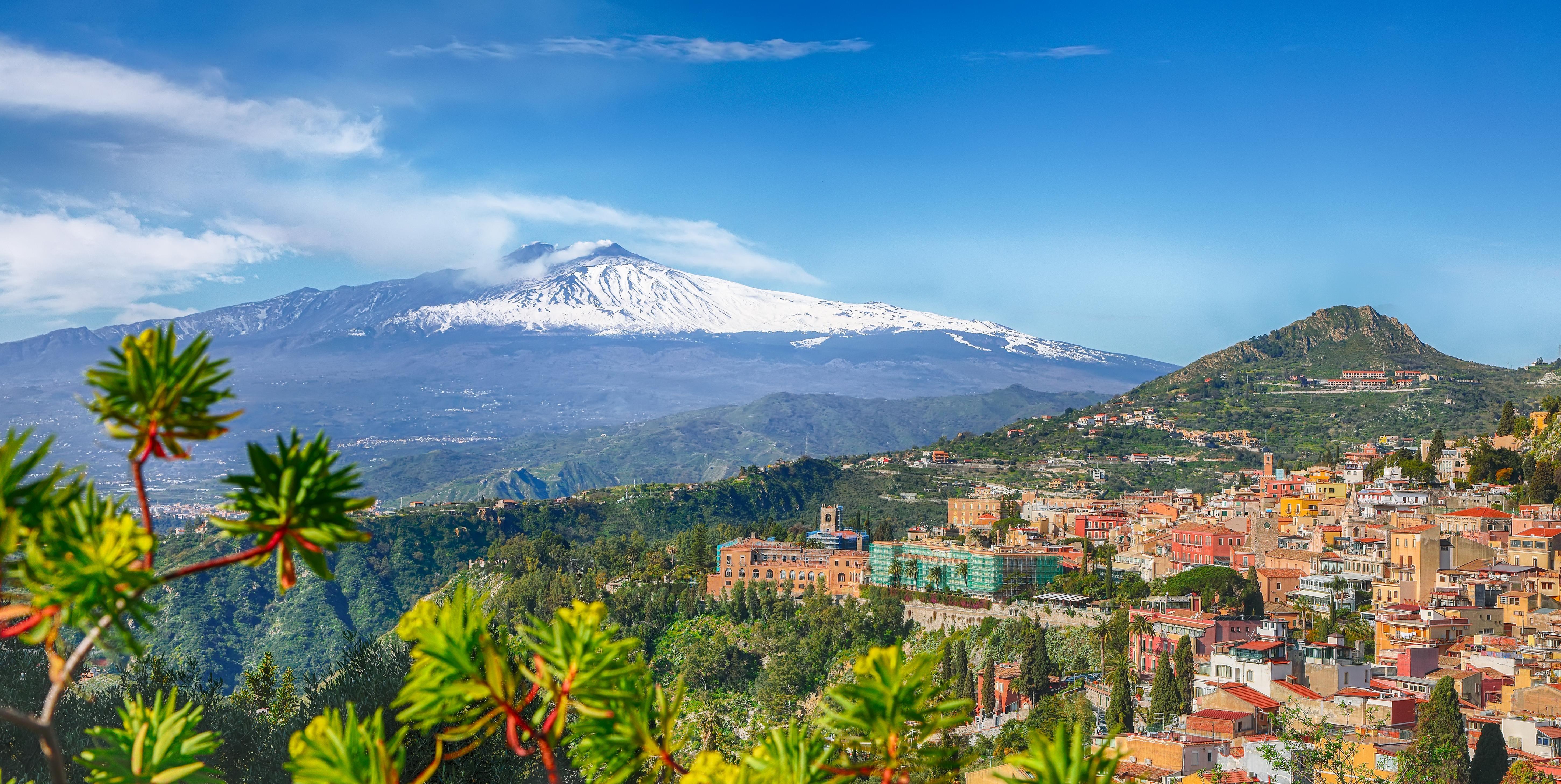
Mount Etna, located on the east coast of Sicily, is Europe's most active volcano and one of the most studied in the world. The intrigue of Etna lies in its continuous activity, which has been documented for thousands of years. The volcano's frequent eruptions have shaped the surrounding landscape, creating fertile soils that support agriculture and viticulture. Etna's activity is closely monitored by scientists, who study its eruptions to gain insights into volcanic behavior and risk mitigation. Despite the potential dangers, the volcano is a popular tourist destination, offering visitors the chance to explore its craters and lava fields. Mount Etna's enduring presence serves as a testament to the resilience of human communities living in the shadow of active volcanoes, where life and volcanic activity coexist in a delicate balance.
8. The Beauty of Arenal Volcano: Costa Rica's Natural Wonder
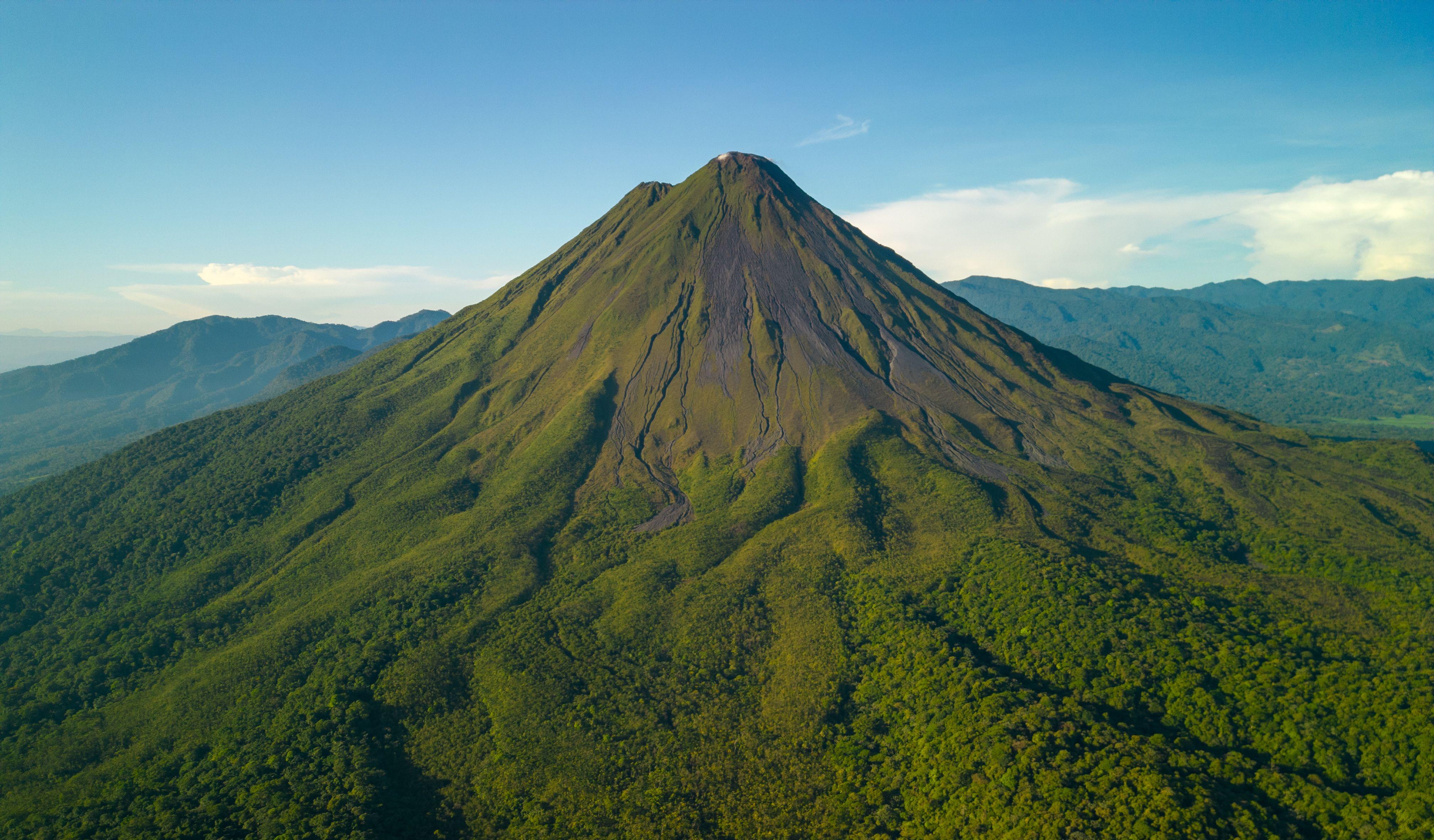
Arenal Volcano, located in northwestern Costa Rica, is a stunning example of a stratovolcano with a near-perfect cone shape. The beauty of Arenal lies in its lush surroundings and the vibrant ecosystem that thrives in its shadow. The volcano was one of Costa Rica's most active until 2010, when it entered a resting phase. Despite its current dormancy, Arenal remains a popular destination for tourists seeking adventure and natural beauty. The surrounding Arenal Volcano National Park offers a wealth of outdoor activities, from hiking and birdwatching to hot springs and zip-lining. Arenal's striking landscape and biodiversity make it a symbol of Costa Rica's commitment to conservation and sustainable tourism. The volcano serves as a reminder of the interconnectedness of geological activity and ecological diversity, where volcanic landscapes provide a unique habitat for a wide range of species.
9. The Spectacle of Stromboli: Italy's Lighthouse of the Mediterranean
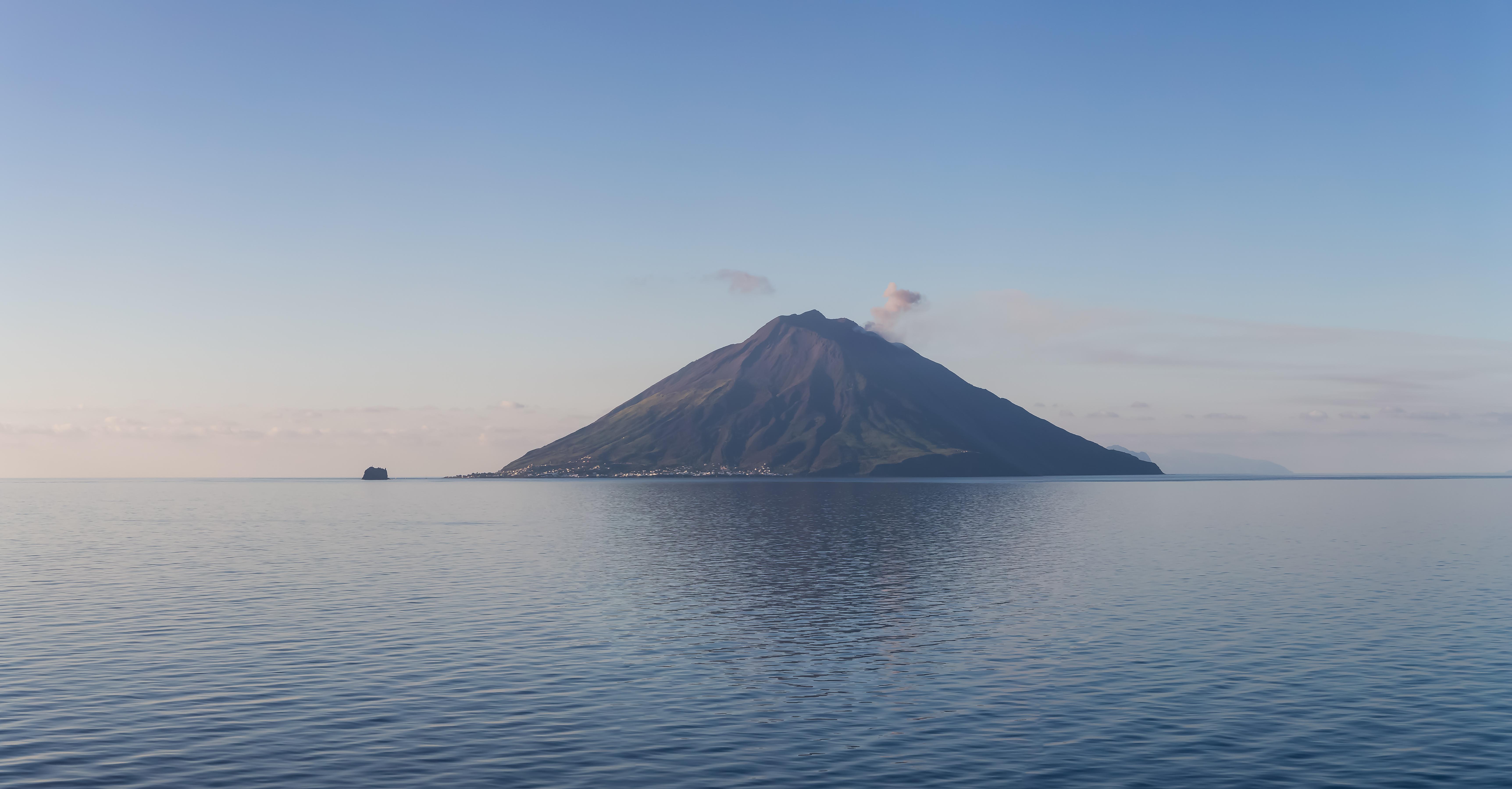
Stromboli, one of the Aeolian Islands off the coast of Sicily, is known as the "Lighthouse of the Mediterranean" due to its continuous volcanic activity. The spectacle of Stromboli lies in its regular, small-scale eruptions, which have been occurring for thousands of years. These eruptions create a natural fireworks display, with glowing lava fragments lighting up the night sky. Stromboli's persistent activity makes it a popular destination for tourists and scientists alike, who are drawn to its dramatic eruptions and the opportunity to study its unique volcanic processes. The island's rugged terrain and picturesque villages add to its allure, offering a glimpse into life on an active volcano. Stromboli serves as a reminder of the Earth's dynamic nature, where volcanic activity is both a source of beauty and a constant presence in the lives of those who call the island home.
10. The Grandeur of Mount Vesuvius: A Volcano's Historical Impact

Mount Vesuvius, located near Naples, Italy, is one of the most famous volcanoes in the world, known for its catastrophic eruption in 79 AD that buried the cities of Pompeii and Herculaneum. The grandeur of Vesuvius lies in its historical impact and the insights it provides into ancient Roman life. The volcano's eruptions have been meticulously documented, offering a wealth of information for historians and volcanologists. Today, Vesuvius is closely monitored for signs of activity, with contingency plans in place to protect the densely populated areas surrounding it. Despite its potential threat, Vesuvius is a popular tourist destination, attracting visitors who are eager to explore its crater and the archaeological sites preserved by its ancient eruptions. Mount Vesuvius serves as a poignant reminder of the destructive power of volcanoes and the resilience of human societies in the face of natural disasters.
11. The Enchantment of Mount Bromo: Indonesia's Sacred Landscape
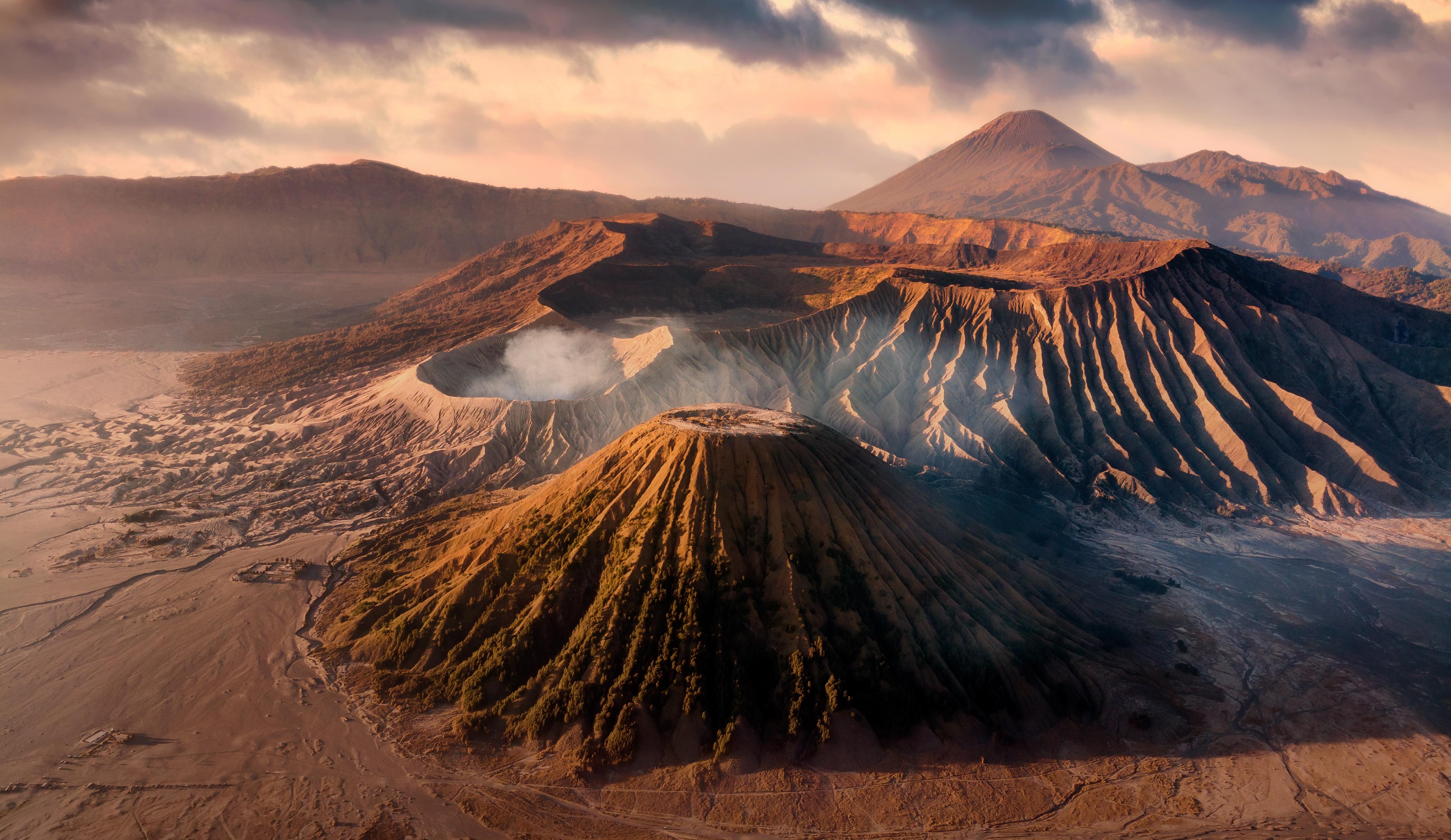
Mount Bromo, part of the Tengger massif in East Java, Indonesia, is a stunning example of a caldera complex with a rich cultural heritage. The enchantment of Bromo lies in its otherworldly landscape and the spiritual significance it holds for the local Tenggerese people. The annual Kasada festival, held at Bromo, is a vibrant celebration where offerings are made to appease the mountain's spirits. The volcano's dramatic landscape, with its smoking crater and surrounding sea of sand, creates an ethereal atmosphere that captivates visitors. Bromo's accessibility and unique cultural experiences make it a popular destination for tourists seeking both adventure and spiritual connection. The volcano serves as a testament to the deep cultural ties between humans and the natural world, where volcanic landscapes are revered as sacred spaces.
12. The Drama of Kilauea: Hawaii's Ever-Flowing Lava
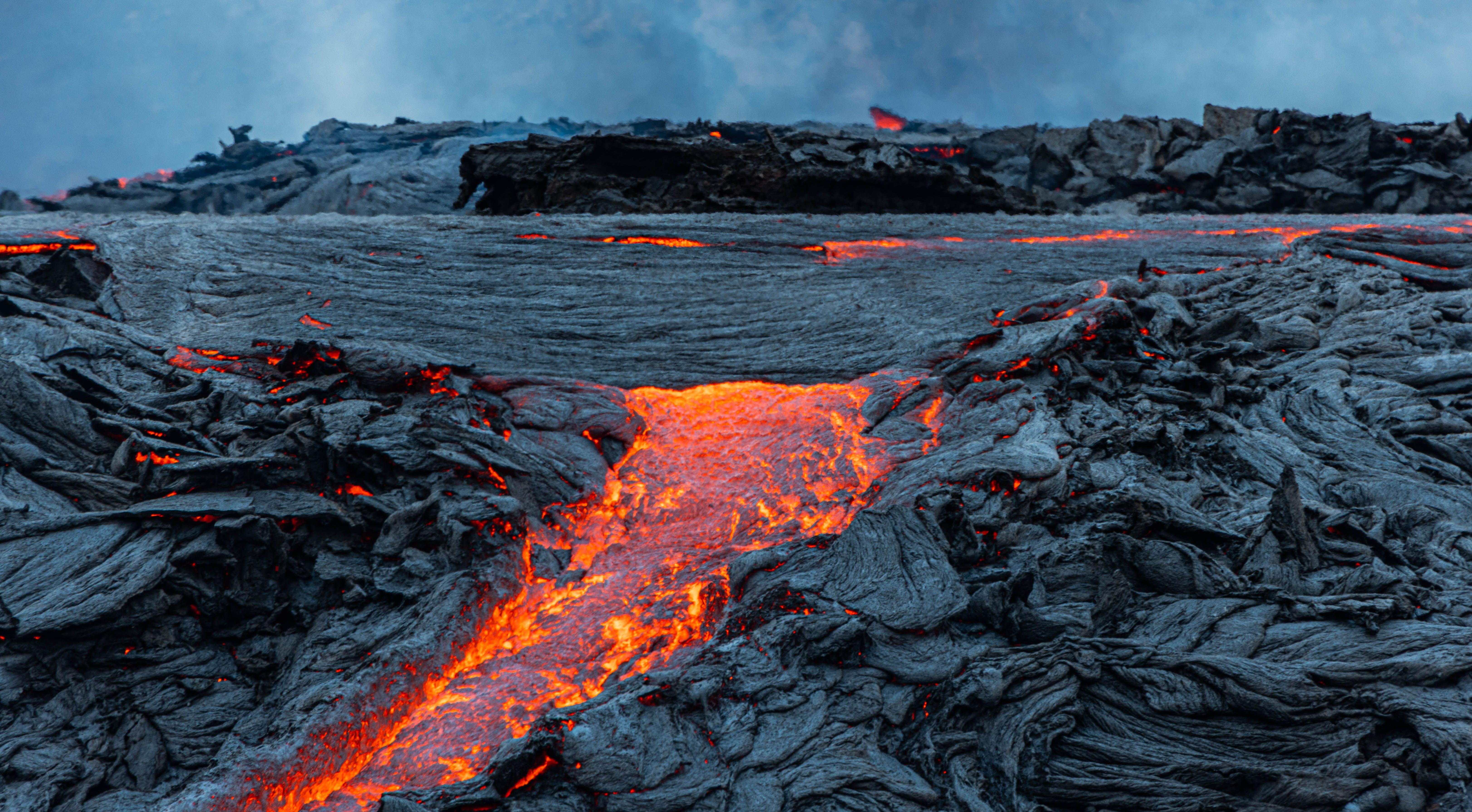
Kilauea, located on the Big Island of Hawaii, is one of the most active volcanoes on Earth, with continuous eruptions since 1983. The drama of Kilauea lies in its ever-flowing lava, which has reshaped the island's landscape over the decades. The volcano's eruptions have destroyed homes and infrastructure, yet they also create new land and provide a unique opportunity to witness the Earth's creative processes in action. Kilauea's activity is closely monitored by scientists, who study its eruptions to better understand volcanic behavior and mitigate risks. Despite the potential dangers, Kilauea is a major tourist attraction, drawing visitors eager to see its glowing lava flows and explore the surrounding Hawaii Volcanoes National Park. The volcano serves as a reminder of the Earth's dynamic nature, where destruction and creation are intricately linked in a continuous cycle of change.
13. The Splendor of Mount Teide: Spain's Volcanic Crown
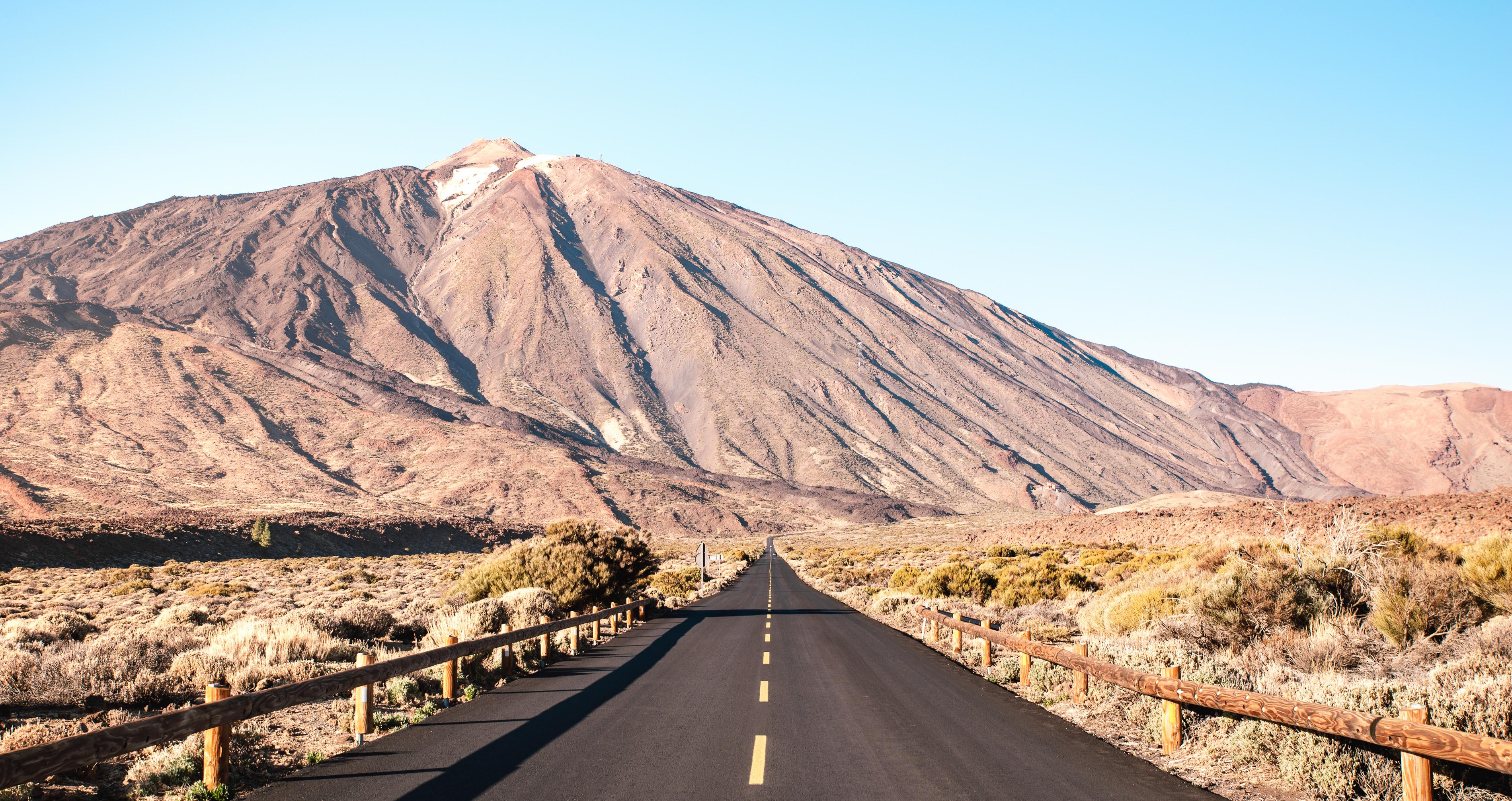
Mount Teide, located on the island of Tenerife in the Canary Islands, is Spain's highest peak and a UNESCO World Heritage Site. The splendor of Teide lies in its striking landscape and the diverse ecosystems that thrive on its slopes. The volcano's last eruption in 1909 has left a legacy of unique geological features, including lava tubes and volcanic cones. Teide's summit offers breathtaking views of the surrounding islands and the Atlantic Ocean, making it a popular destination for hikers and nature enthusiasts. The volcano's rich biodiversity and stunning vistas are protected within the Teide National Park, which is home to several endemic species. Mount Teide serves as a testament to the beauty and diversity of volcanic landscapes, where geological forces have shaped a unique environment that captivates the imagination.
14. The Wonder of Mount Mayon: The Philippines' Perfect Cone
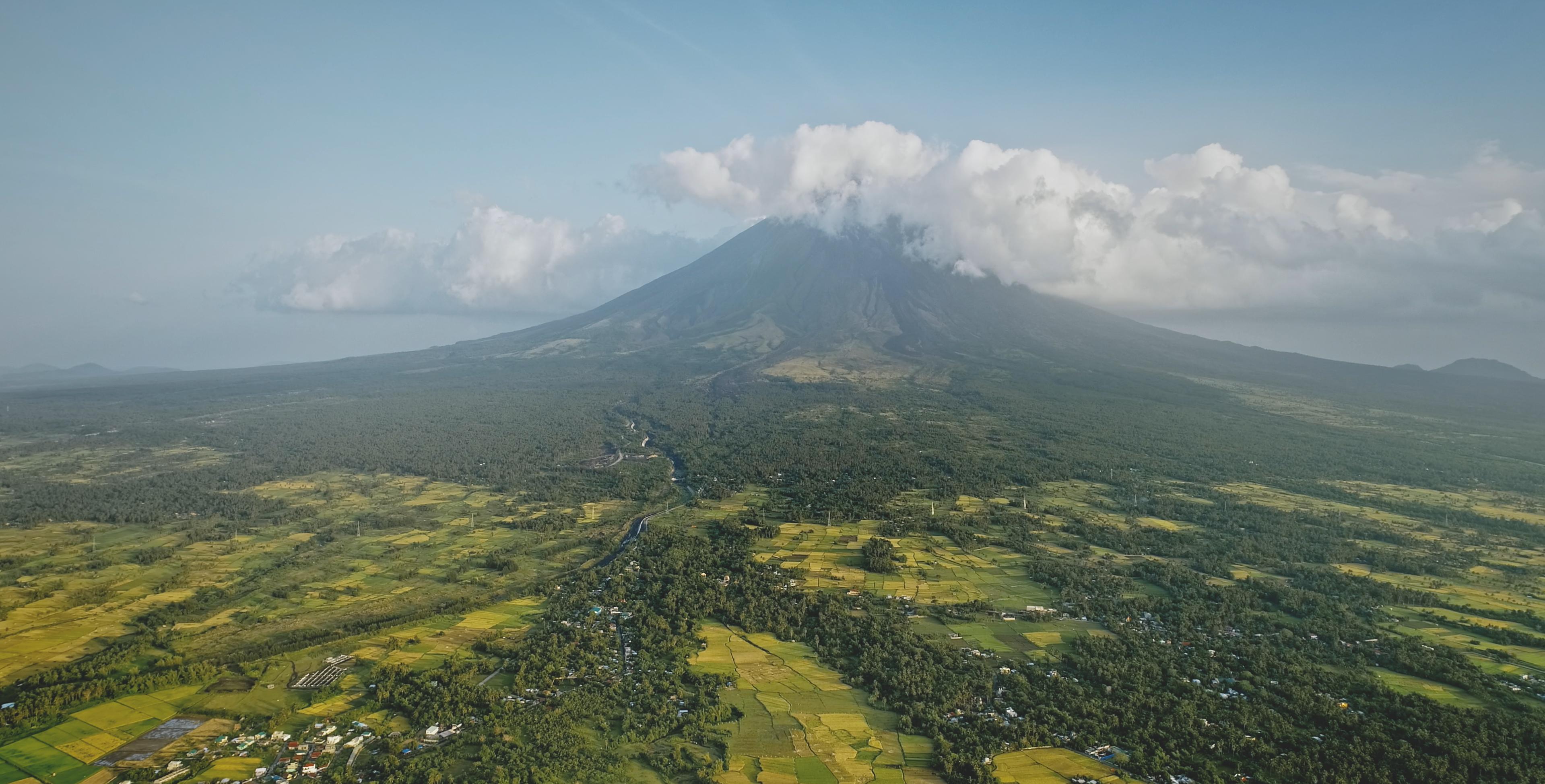
Mount Mayon, located in the Bicol Region of the Philippines, is renowned for its near-perfect cone shape and frequent eruptions. The wonder of Mayon lies in its symmetrical beauty and the powerful eruptions that have shaped its landscape. The volcano's activity is closely monitored, with evacuation plans in place to protect the densely populated areas surrounding it. Despite the risks, Mount Mayon's stunning silhouette and lush surroundings make it a popular destination for tourists and photographers. The volcano's eruptions are both a source of danger and a spectacle of nature's power, drawing visitors eager to witness its fiery displays. Mount Mayon serves as a reminder of the delicate balance between human habitation and the forces of nature, where beauty and danger coexist in a dynamic landscape.
15. The Legacy of Mount St. Helens: A Volcanic Transformation
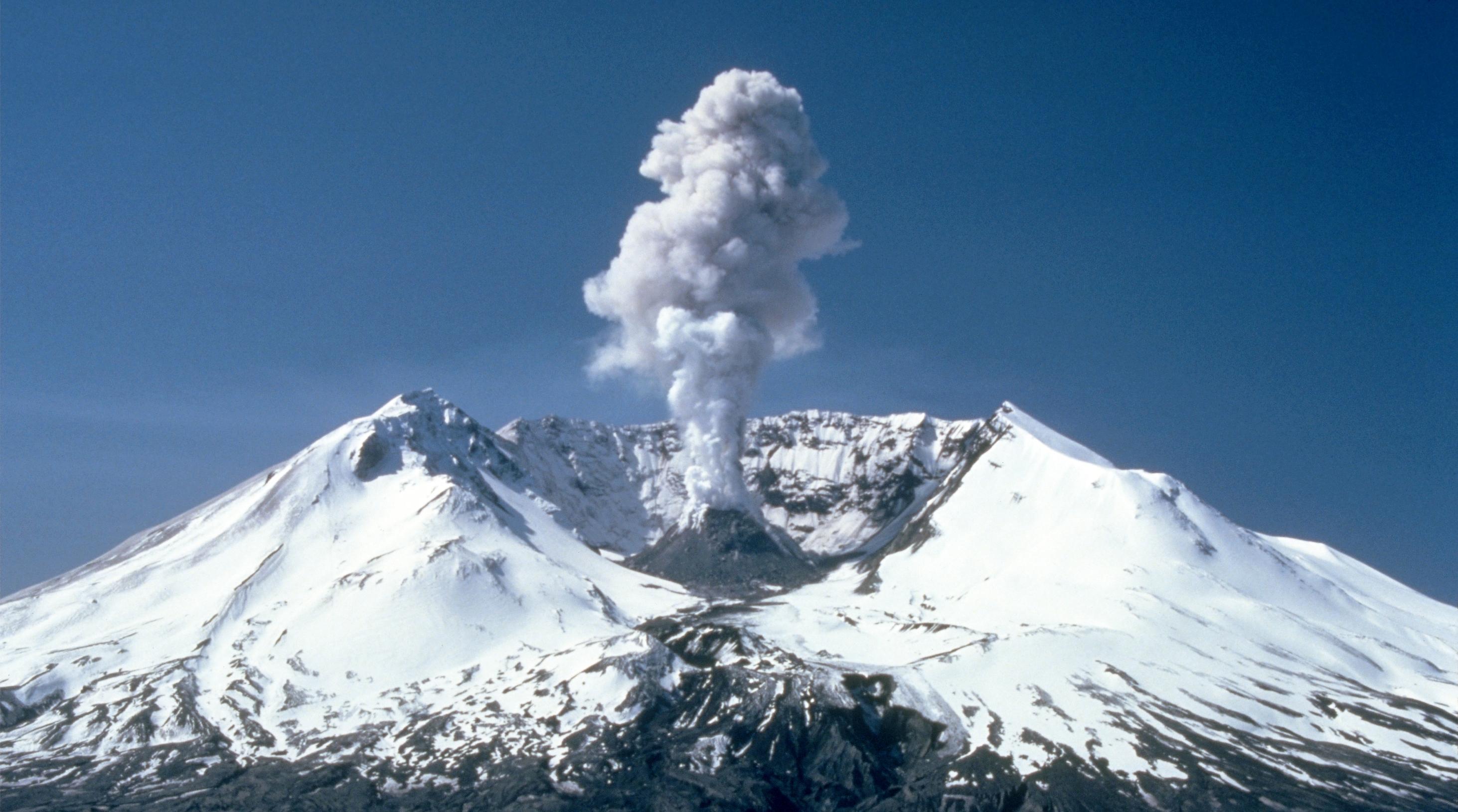
Mount St. Helens, located in Washington State, USA, is famous for its catastrophic eruption in 1980, which drastically altered the surrounding landscape. The legacy of St. Helens lies in the dramatic transformation it underwent and the insights it provides into volcanic processes and ecological recovery. The eruption's aftermath created a unique opportunity for scientists to study the effects of volcanic activity on ecosystems and the resilience of nature. The Mount St. Helens National Volcanic Monument offers visitors a chance to explore the transformed landscape and learn about the volcano's history and ongoing research. The volcano's recovery and the return of plant and animal life serve as a testament to the resilience of nature and the ability of ecosystems to adapt and thrive in the face of change.
16. Mount Yasur – Vanuatu’s Glowing Sentinel
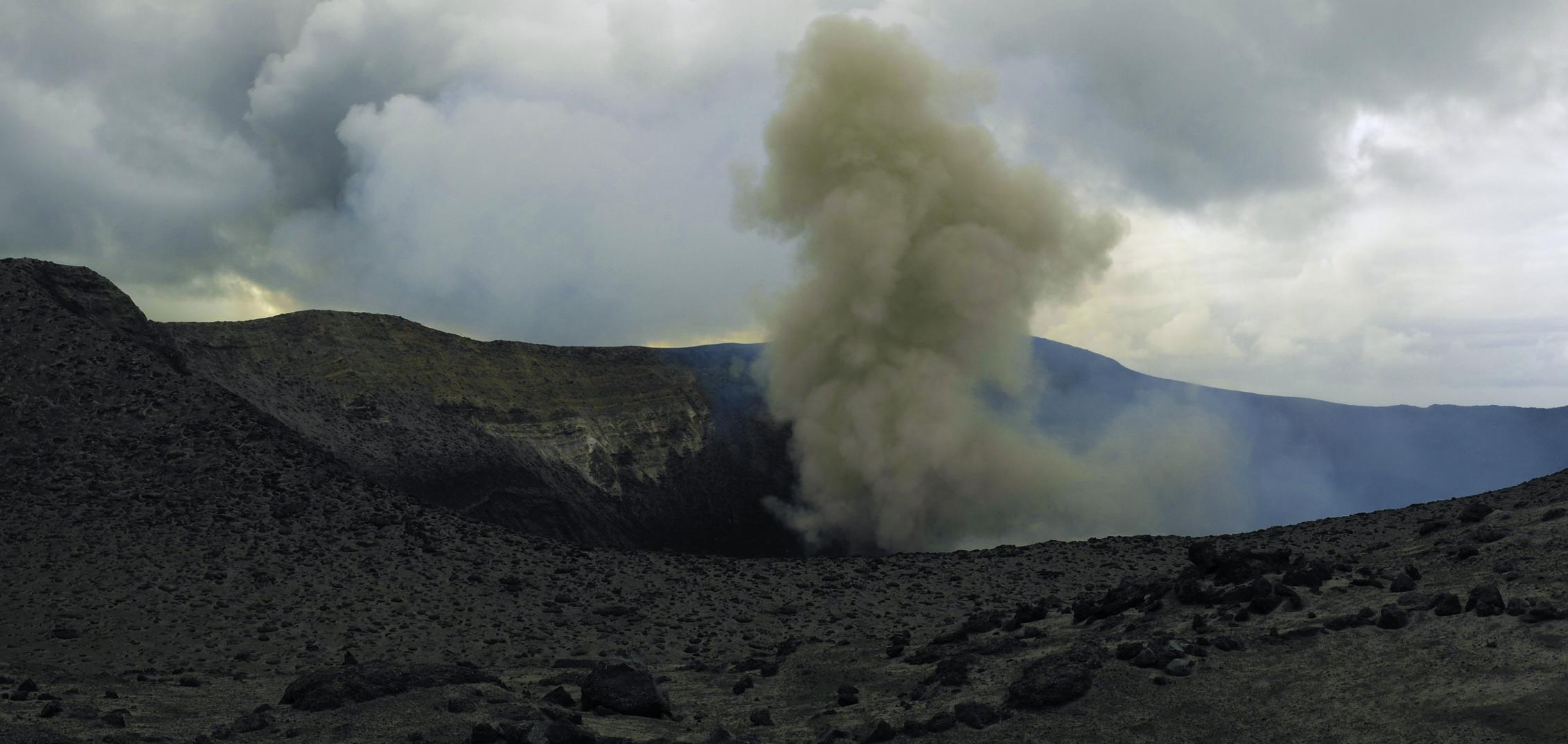
Mount Yasur, located on Tanna Island in Vanuatu, is one of the world’s most accessible active volcanoes. For centuries, its persistent eruptions have lit up the South Pacific sky with glowing lava fountains and thunderous explosions. What makes Yasur truly surreal is the ease with which visitors can hike to the crater’s edge and peer directly into the molten heart of the Earth. Its eerie red glow at dusk and dramatic nighttime displays have inspired legends among locals and awed adventurers alike. The surrounding ash plains and jungle landscapes only add to the dreamlike atmosphere of this volcanic giant.
17. Kelimutu – Indonesia’s Tri-Color Crater Lakes
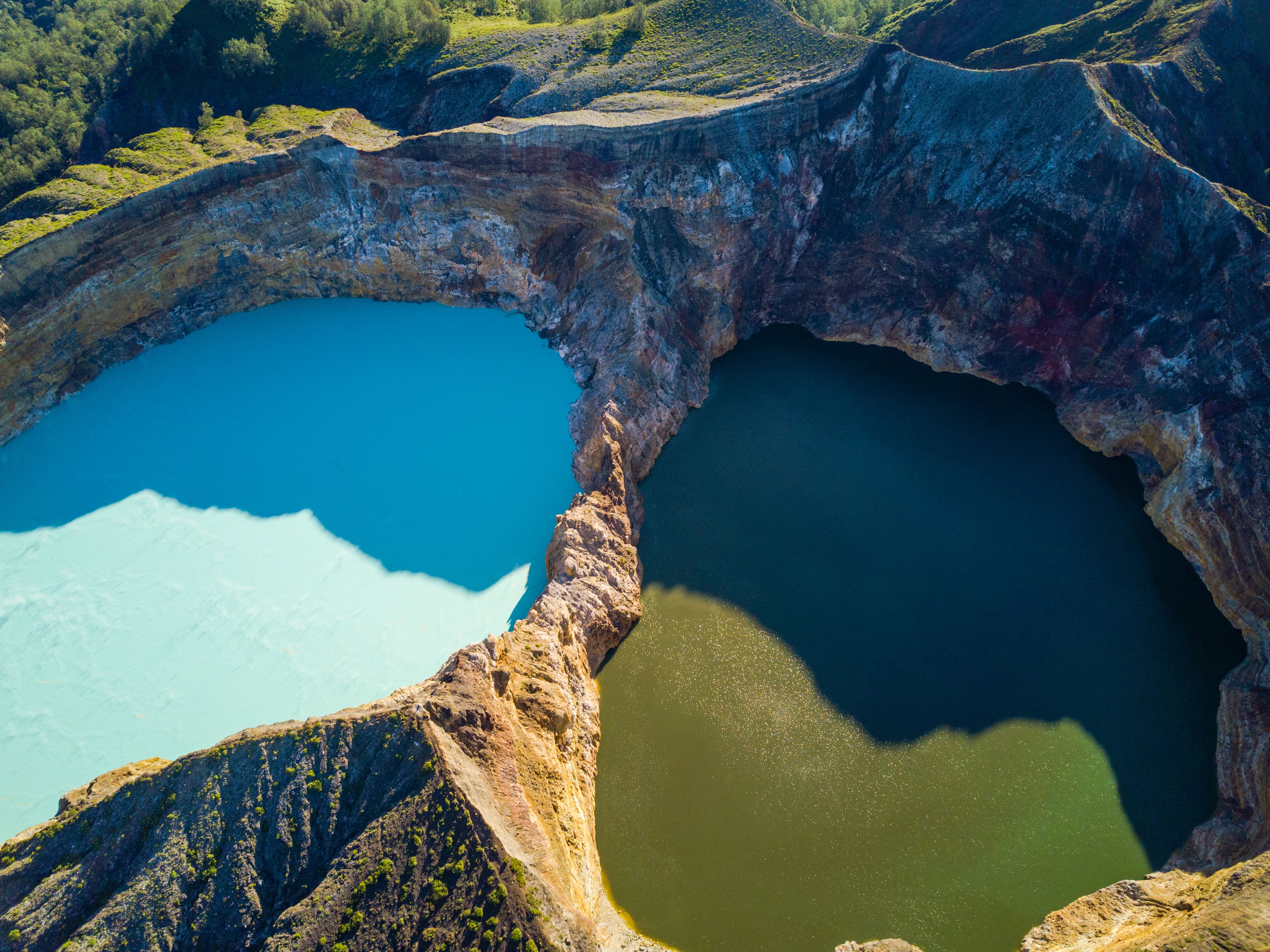
On the island of Flores in Indonesia, Kelimutu Volcano features three crater lakes, each with strikingly different and ever-changing colors. These surreal hues range from turquoise to deep red to pitch black, thanks to varying mineral content and chemical reactions within each caldera. Locals believe the lakes are the resting place of souls—each color representing a different type. The juxtaposition of these vibrantly colored waters against the lush highland scenery makes Kelimutu feel more like a mythical painting than a real-world destination.
18. Mount Paektu – Korea’s Sacred Crater Lake
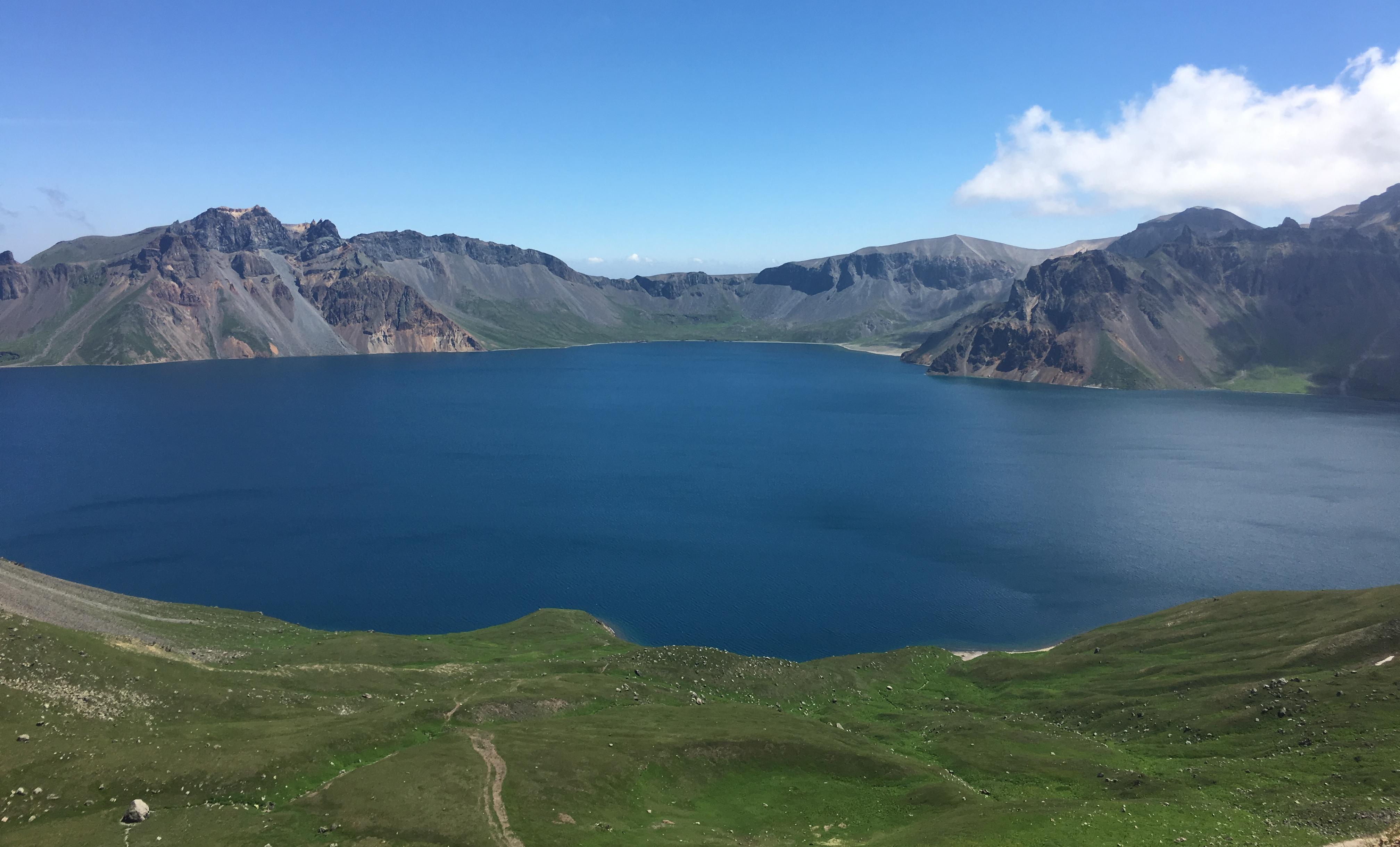
Straddling the border of North Korea and China, Mount Paektu (also known as Changbai Mountain) is a massive stratovolcano crowned by Heaven Lake, a pristine caldera filled with icy-blue water. Shrouded in both political mystery and spiritual reverence, this volcano is sacred in Korean folklore, believed to be the birthplace of the Korean people. Its high-altitude setting, dense conifer forests, and the mirror-like caldera lake offer a solemn and majestic presence that feels untouched by time.
19. Askja – Iceland’s Remote Martian Caldera
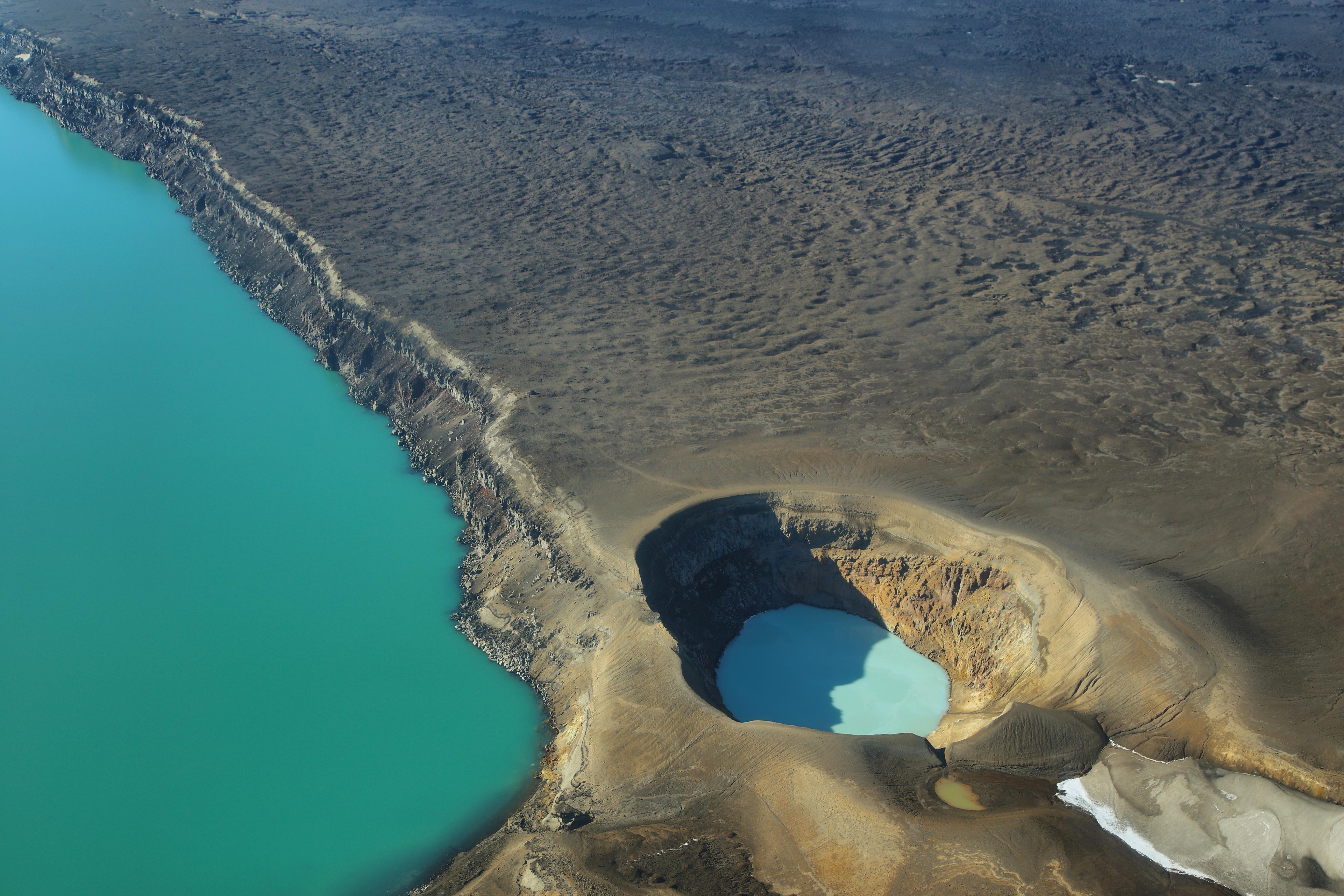
Deep in Iceland’s central highlands, Askja is a remote volcanic system that resembles an alien landscape more than an earthly destination. Its massive caldera houses Lake Öskjuvatn, one of the deepest lakes in Iceland, as well as the warm, milky-blue Viti crater—popular for adventurous bathing. Surrounded by black lava fields, steaming vents, and snow-dusted ridges, Askja offers one of the most surreal volcanic landscapes on the planet. It's no wonder NASA trained Apollo astronauts here in preparation for the moon.
20. Mount Rinjani – Indonesia’s Summit Lake Sanctuary
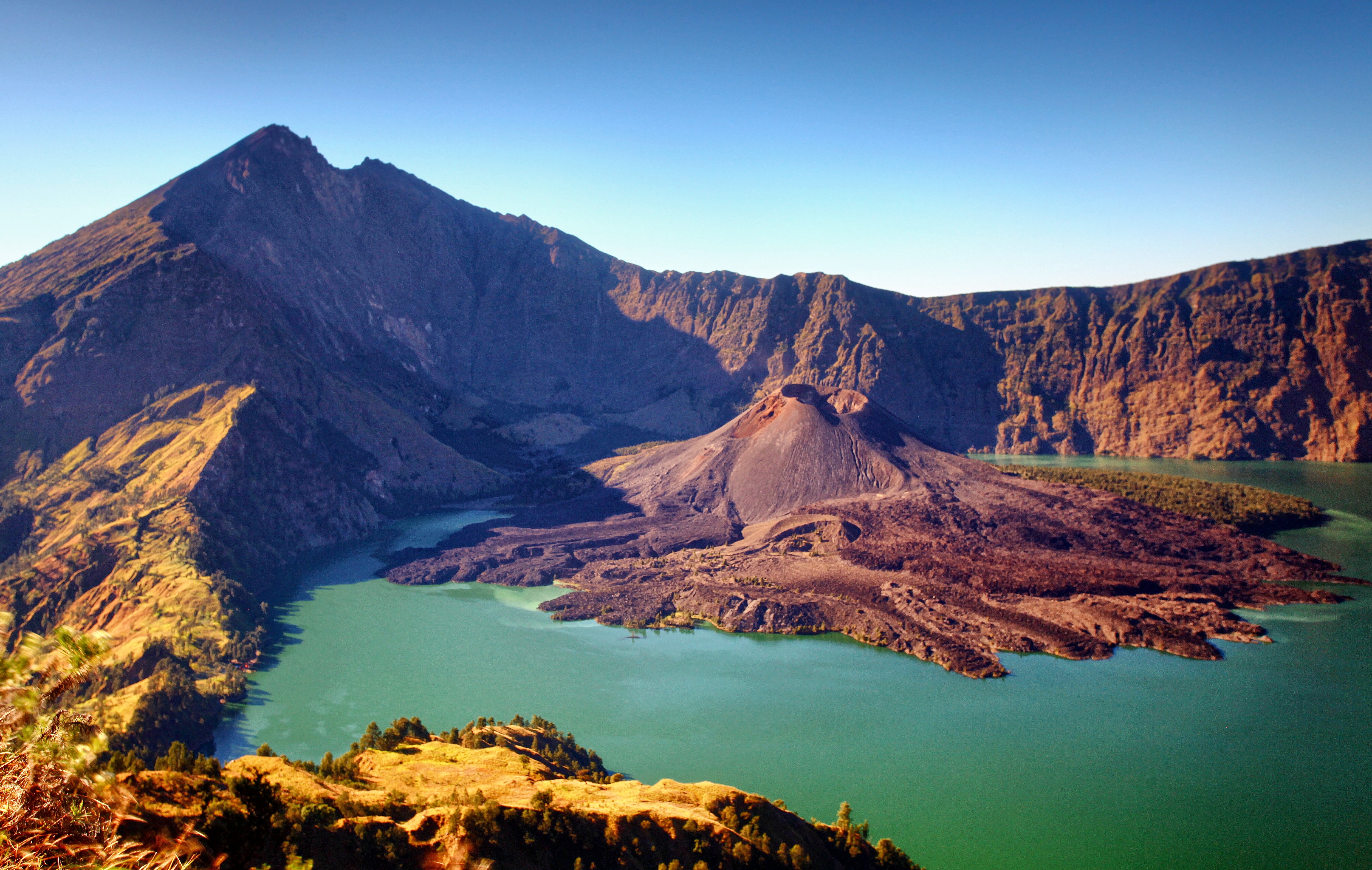
Towering over Lombok, Mount Rinjani is one of Indonesia’s most stunning active volcanoes, famous for its dramatic caldera and the vivid blue Segara Anak lake nestled inside. A sacred site for local Hindus and Sasak tribes, the volcano is both a challenging trekking destination and a place of pilgrimage. From the summit, views stretch across the island, revealing a landscape shaped by fire and time. With its jagged peaks, crater lake, and steaming new cones forming inside, Rinjani feels like a world suspended between heaven and Earth.
21. Villarrica – Chile’s Glowing Beacon of the South
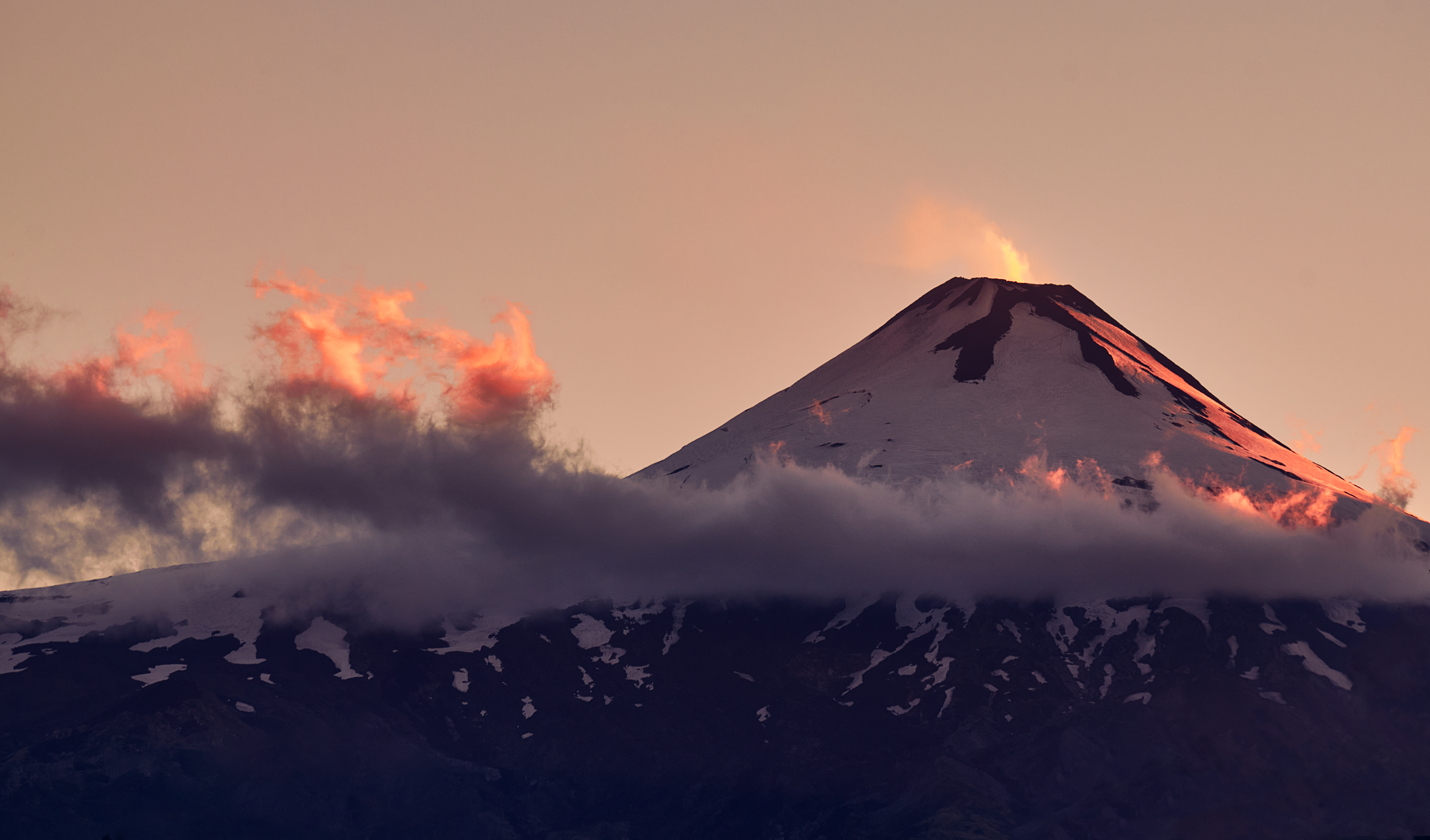
Known for its perfectly symmetrical shape and snow-covered slopes, Villarrica in Chile is one of the most active volcanoes in South America. What makes Villarrica especially striking is its open lava lake, often visible glowing at night—a rare feature that gives the volcano an eerie beacon-like appearance. Adventurous climbers can ascend its glacier-carved slopes and gaze down into the churning crater. Set against Patagonia’s green lakes and forests, Villarrica offers a powerful contrast between serenity and raw volcanic force.
22. Mount Taranaki – New Zealand’s Volcanic Reflection
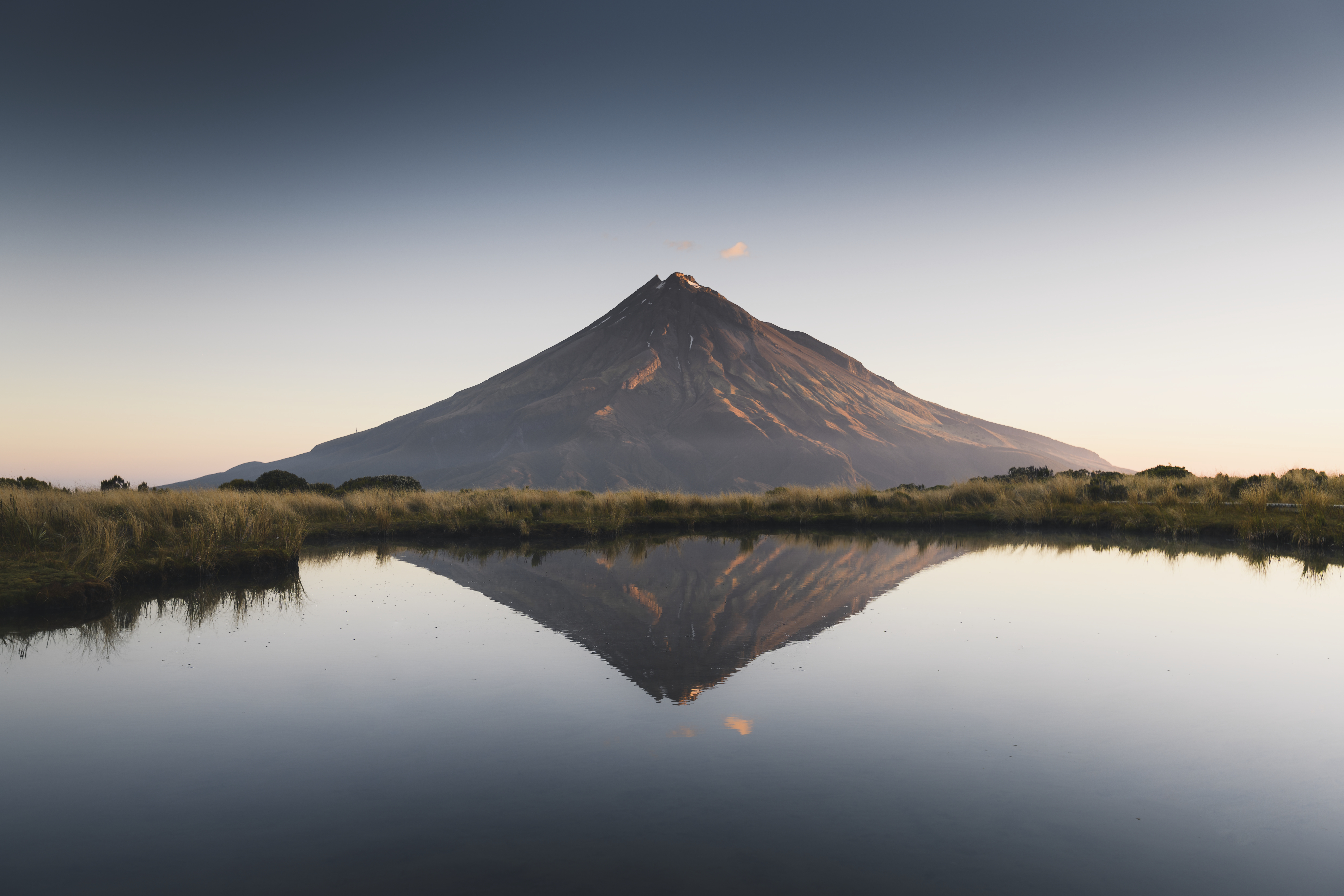
Rising almost perfectly symmetrically from the western coast of New Zealand’s North Island, Mount Taranaki is often likened to Mount Fuji in Japan. Its snow-capped peak and surrounding rainforest make it one of the most photogenic volcanoes in the world. What’s especially surreal is the way Taranaki reflects almost perfectly in nearby Pouakai Tarn—a phenomenon that looks straight out of a fantasy landscape. Its cultural importance to the Māori people and prominent visibility from sea level only amplify its mythic presence.
23. Mount Damavand – Iran’s Snow-Capped Stratovolcano
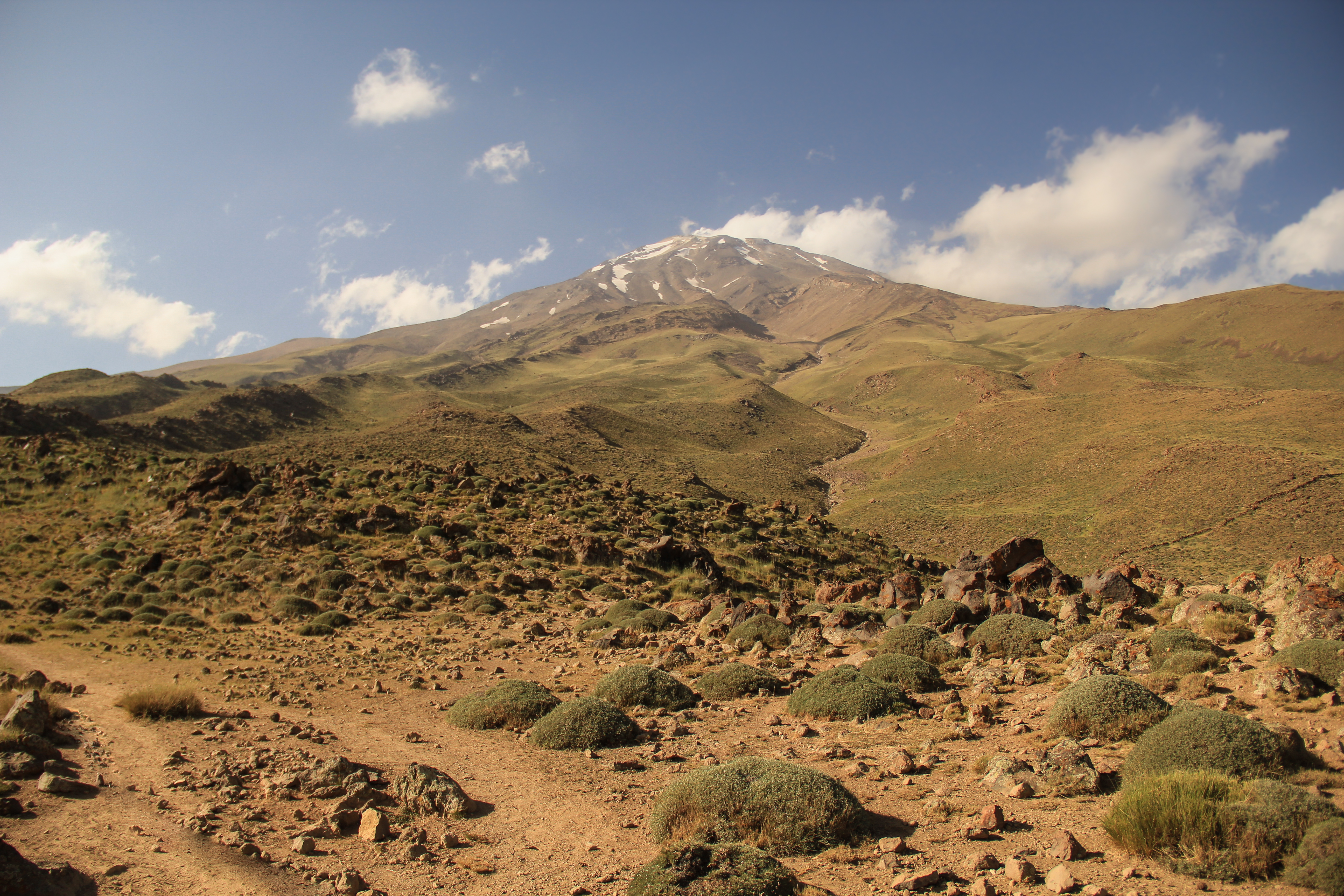
Mount Damavand, the highest peak in the Middle East, rises dramatically from the Alborz range in northern Iran. This dormant volcano is cloaked in snow much of the year, and its lonely, conical profile has become a symbol of Persian strength and endurance. Sulfur vents near the summit hint at its volcanic nature, while mythological significance in Persian poetry and folklore infuses the mountain with cultural depth. With panoramic views stretching to the Caspian Sea, Damavand is as spiritually resonant as it is visually commanding.
24. Nabro Volcano – Eritrea’s Hidden Giant
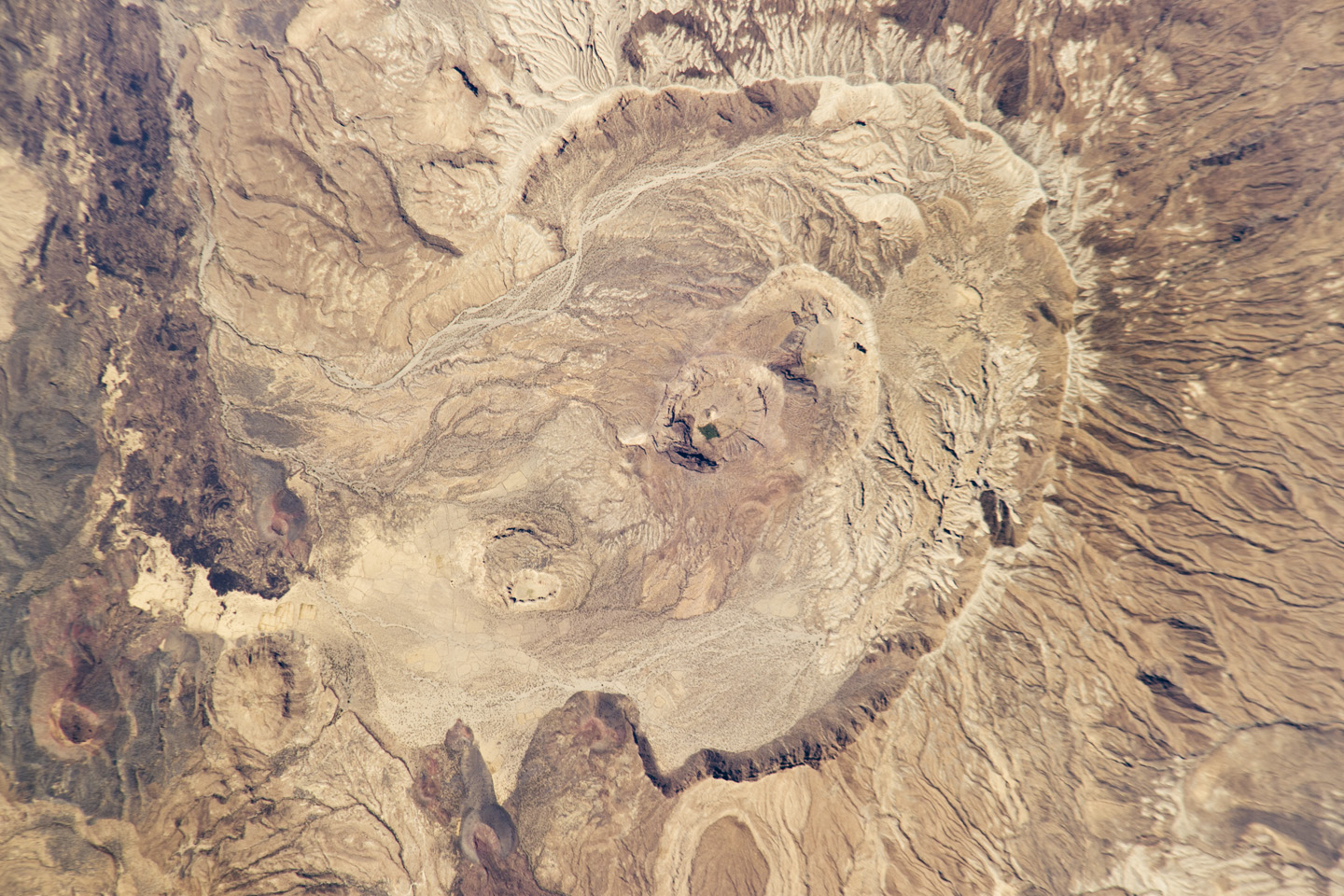
Virtually unknown to many travelers, Nabro is a remote volcano in Eritrea near the Ethiopian border. Its surprise eruption in 2011 after a 10,000-year dormancy shocked scientists and thrust it into the global spotlight. Surrounded by a desolate desert landscape, Nabro’s wide caldera, ash plains, and sulfur-laced fumaroles present a vision of Earth in its rawest, least-touched form. For those seeking a surreal and little-known volcanic destination, Nabro delivers stark, otherworldly beauty.
25. Mount Ruapehu – New Zealand’s Fiery Film Star
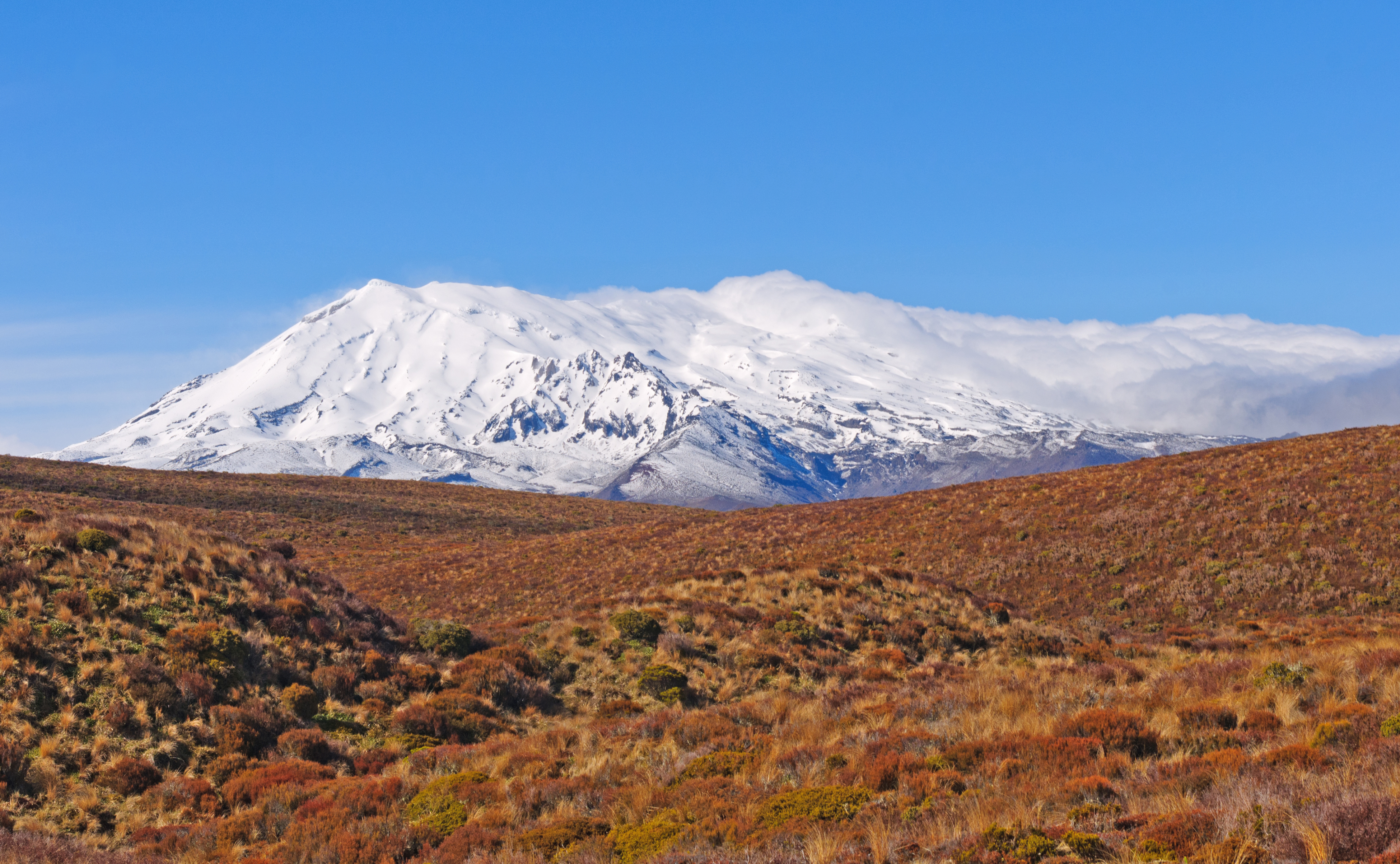
Located in Tongariro National Park, Mount Ruapehu is one of New Zealand’s most active volcanoes—and it doubles as a cinematic legend. It famously stood in for Mount Doom in the “Lord of the Rings” trilogy, and its volcanic slopes live up to the title. The crater lake at its summit constantly changes color, reflecting varying temperatures and mineral content. Combined with surrounding glaciers and rugged lava fields, Ruapehu offers a rare blend of geologic volatility and mythical allure.
The Enduring Fascination with Volcanic Wonders
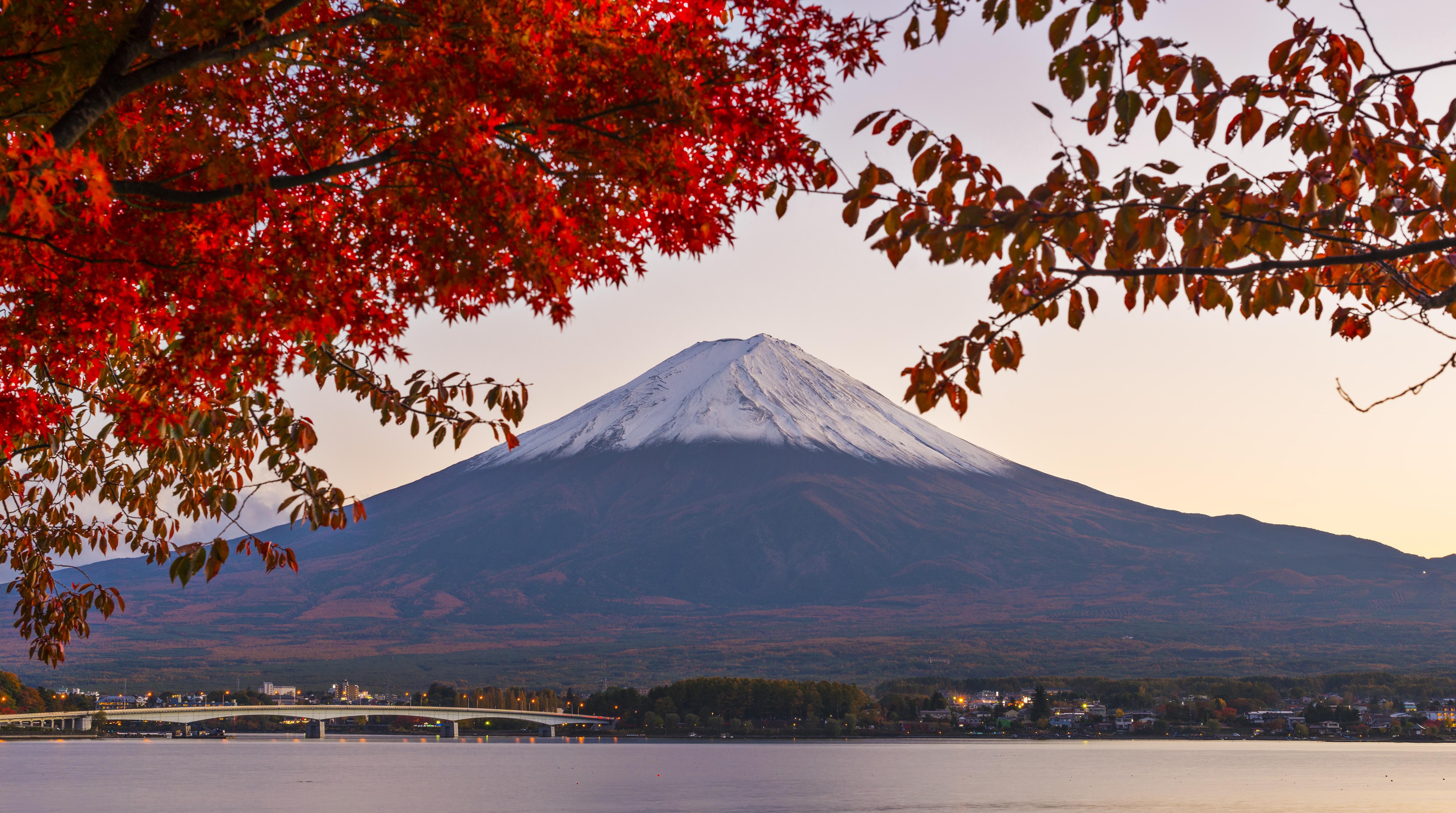
Volcanoes are more than just geological phenomena; they are powerful symbols of the Earth's dynamic nature and the forces that shape our world. The 25 volcanic wonders explored in this article offer a glimpse into the beauty, mystery, and drama of volcanic landscapes. From the icy peaks of Mount Erebus to the fiery displays of Kilauea, each volcano tells a unique story of creation and destruction, challenging our perceptions and igniting our imagination. The enduring fascination with volcanic wonders lies in their ability to captivate and inspire, reminding us of the delicate balance between human habitation and the forces of nature. As we continue to explore and study these fiery spectacles, we gain a deeper understanding of the Earth's processes and our place within the natural world.








